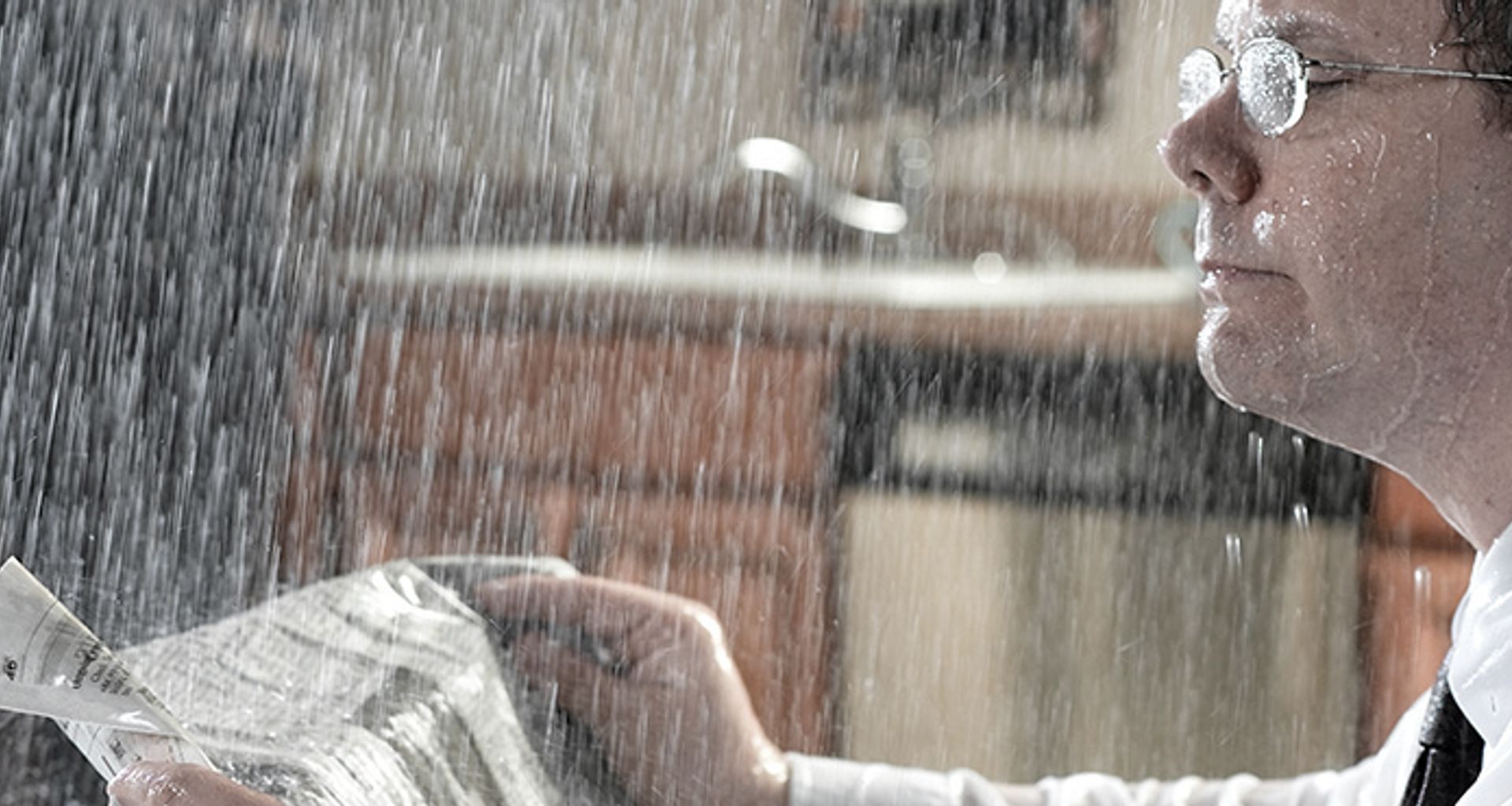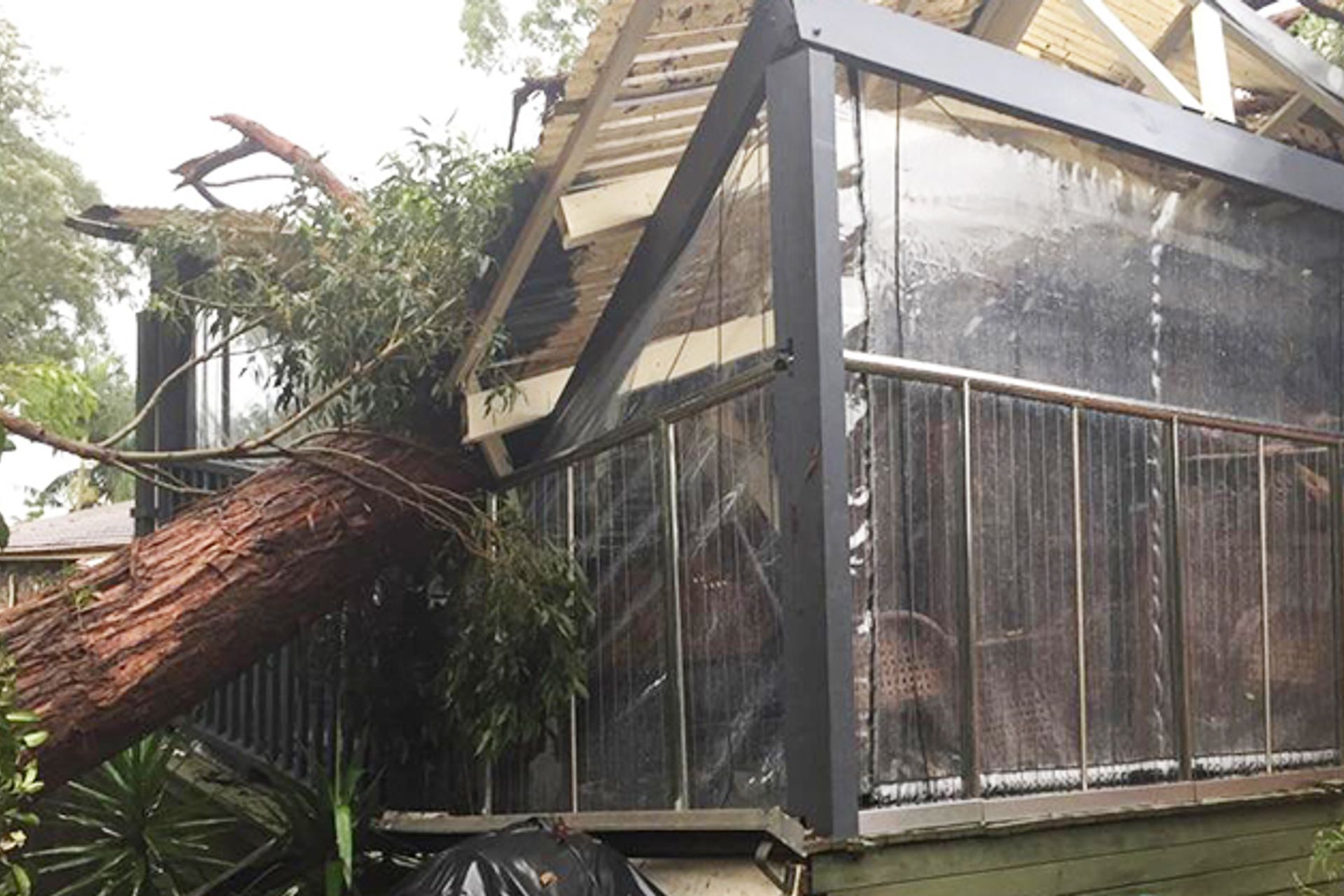Storm damage? Here's what you need to know about your insulation

Home comfort tips
Has your home been affected by water due to a storm or flood? Understand what you need to do with wet insulation segments in walls, roofs, ceiling and floors.
There are few things more devastating than a weather event which invades your home. And it can be overwhelming to deal with – where do you start when a tree has come crashing through your roof after a storm, as recently happened to one of our own here at CSR Bradford?
At CSR Bradford, we are here to help. Here are some practical tips on what you need to consider when your insulation segments have gotten wet, whether they’re in your roof, ceiling, walls or under your floor. If you need more information or want to get someone out to help, please call us on 0800 277 123.

What can happen if your insulation gets wet?
Glasswool insulation, like Bradford’s, utilises the air pockets between the fibres of spun glass to trap heat. If the insulation gets very wet, it can be compressed by the weight of the water and it may not recover to its original thickness, meaning it will not perform as well to trap the heat flow between inside and outside.
Water trapped in the insulation segments can also cause mould growth, or possibly leak out onto your plasterboard, causing unsightly staining and damage.
Finally, insulation which is installed behind metal cladding can cause rust and corrosion.
With this in mind, it’s always a good idea after your house is impacted by a weather event to get the insulation assessed. Bradford has a network of installers who are available to come to you and offer advice. Contact us for help.
Assessing the damage to your insulation
The first step after any damage to your home is to contact your insurance company. However, if you want to have some idea yourself and you can safely view the insulation, here are some questions to consider:
Is the insulation completely saturated or only slightly wet?
- If it is completely saturated, it will be required to be replaced. Even if dried out, it will not recover its original thickness and therefore the effectiveness of the insulation will be significantly reduced.
- If it is slightly wet due to something like minor leakage through the roof or floor, it can be dried out, reinstalled and reused.
Is the insulation torn, damaged or compressed by the building damage?
- If the segments or blanket are still intact and full-size, then they may be able to be reinstalled, depending upon the saturation factor.
- If the insulation is torn or shredded however, you will need to consider replacing it. You can install pieces of insulation such as off-cuts into a space, but glasswool insulation depends upon full coverage to be effective, otherwise heat can escape through small holes and spaces.
Disposal of damaged insulation
It is recommended to use gloves and long-sleeves to avoid the short-term irritation from the glass fibres. However, please be assured that Bradford insulation is composed of bio-soluble fibres which do not pose any risk to health, nor do they cause dermatitis or other skin conditions. Any irritation caused should be resolved by a shower. In fact, our insulation is less bio-persistent (a measure of whether a compound will remain inside a biological organism such as the human body, instead of being expelled or broken down) than the dust you inhale as you walk down the street.
Once you have removed the insulation, please contact your local authorities about disposal. Some rubbish disposal places may require insulation to be placed in bags to stop the segment breaking up and being blown around.
Assessing the damage to your insulation
The first step after any damage to your home is to contact your insurance company. However, if you want to have some idea yourself and you can safely view the insulation, here are some questions to consider:
Is the insulation completely saturated or only slightly wet?
- If it is completely saturated, it will be required to be replaced. Even if dried out, it will not recover its original thickness and therefore the effectiveness of the insulation will be significantly reduced.
- If it is slightly wet due to something like minor leakage through the roof or floor, it can be dried out, reinstalled and reused.
Is the insulation torn, damaged or compressed by the building damage?
- If the segments or blanket are still intact and full-size, then they may be able to be reinstalled, depending upon the saturation factor.
- If the insulation is torn or shredded however, you will need to consider replacing it. You can install pieces of insulation such as off-cuts into a space, but glasswool insulation depends upon full coverage to be effective, otherwise heat can escape through small holes and spaces.
Disposal of damaged insulation
It is recommended to use gloves and long-sleeves to avoid the short-term irritation from the glass fibres. However, please be assured that Bradford insulation is composed of bio-soluble fibres which do not pose any risk to health, nor do they cause dermatitis or other skin conditions. Any irritation caused should be resolved by a shower. In fact, our insulation is less bio-persistent (a measure of whether a compound will remain inside a biological organism such as the human body, instead of being expelled or broken down) than the dust you inhale as you walk down the street.
Once you have removed the insulation, please contact your local authorities about disposal. Some rubbish disposal places may require insulation to be placed in bags to stop the segment breaking up and being blown around.
How to prepare for a storm?
To help minimise the potential impact of a storm, here are some recommended prevention measures:
One. Trim tree branches
Trim tree branches that could fall on your home during a storm.

Two. Check Blockages
Clear your gutters, drains and downpipes from leaves and other blockages so that rain can drain away and avoid pooling around and entering your home.
Three. Tidy Up Outside
Ensure a tidy yard and store away or secure items that may be blown around and cause damage in strong winds such as outdoor furniture.
Four. Inspect Your Roof
Ensure that your roof has no pre-existing damage such as broken and missing roof tiles or roof sheeting that needs to be patched or replaced. It is also important to check that no light is shining through your roof space as this indicates that your roof or roof underlay may be damaged.
Build your home to help prevent water damage with roof underlay and wall wrap
Although nothing is going to prevent the damage caused by a tree falling through your roof or a major flood event, there are things you can do when building your house to help prevent small amounts of water entering your home through cracks in walls or roofs – small amounts of water which can still cause major damage to your home, often unseen.
Wall Wrap and Roof Underlay to reduce moisture entry
When building a new home or replacing a tiled roof, ask your builder about wall wrap and roof underlay. These products provide a protective second skin for your home, preventing the entry storm-driven rain, dust and draughts into your home. They also add thermal performance by reducing air-flow around insulation and through the wall frame, meaning you have better control over your home’s internal environment.
Have you been affected by storm, flood or water damage?
If you’re looking to replace your insulation, think Bradford, the brand the builders use. Our network of trained installers can remove your damaged insulation and dispose of it according to local regulations, and replace it with fresh, high-performance insulation to make your home as comfortable as possible.
